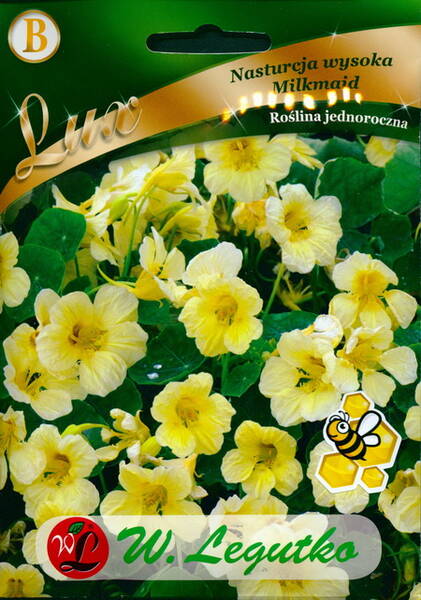Beautiful decorative leaves. Length up to 2.5 m. Flowers are large (up to 5 cm), from milky yellow to creamy white, non-double.
Used to decorate gazebos, balconies, hedges. As an ornamental deciduous plant, it is used to frame flower beds. They are planted in balcony boxes and flowerpots.
Fresh green seeds are eaten and pickled. Flowers and leaves are used for food (in salads and for decorating sweet dishes). It tastes like watercress.
Agrotechnology.
Prefers soils of medium fertility, since on rich soils it greatly increases the green mass and blooms little. Photophilous. Heals the soil from fungal diseases. After it, asters and sweet peas grow better.
Sowing: before sowing, the seeds are poured with hot water (+ 40 + 50 ° C) and left for a day. Grown through seedlings or by sowing into the ground at a distance of 25-30 cm (when the threat of frost has passed).
Nasturtium seeds germinate at temperatures not lower than + 15 ° C. In a potless culture, the transplant does not tolerate well.
Watering at the beginning of growth, loosening, top dressing before flowering with an interval of 7-10 days:
Flowering: abundant from late June to autumn frosts.
* If the hit parade of the popularity of garden flowers were held, then, undoubtedly, nasturtium would occupy one of the first places in it.
It is difficult to find a garden where this flower does not meet. In addition, nasturtium is also a wonderful balcony plant.
Probably everyone has heard about its unpretentiousness, but perhaps few know about the benefits for your garden and even for the table.
If you think that nasturtium is very commonplace and will not work for your garden, then you are greatly mistaken ...
This flower, like no other, will fit into almost any garden concept: fashionable, ecological or any other. After all, it is no coincidence that nasturtium was one of the favorite flowers of Claude Monet, who occupied huge areas in his Giverny garden near Paris.












